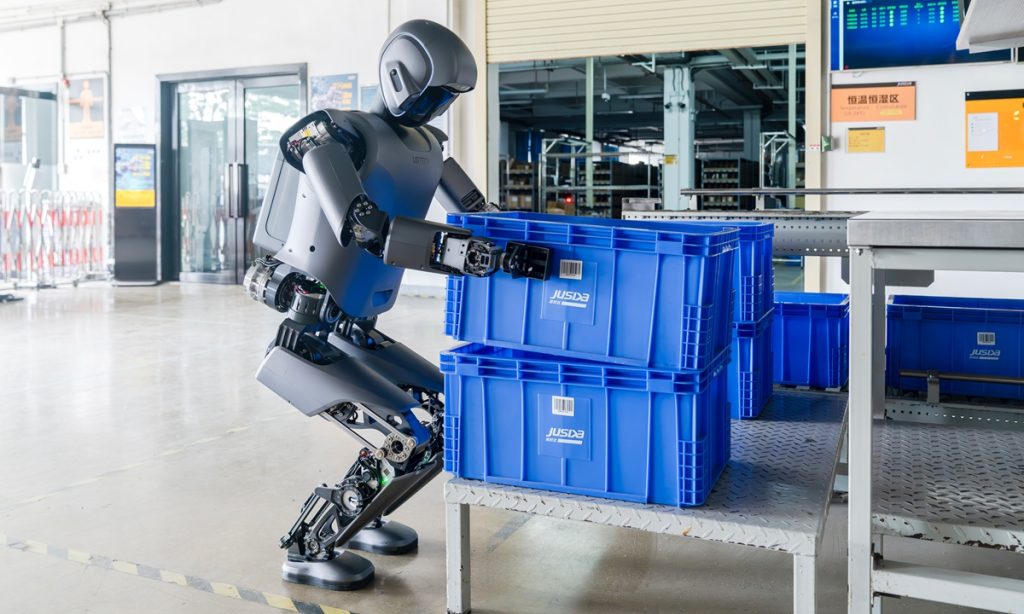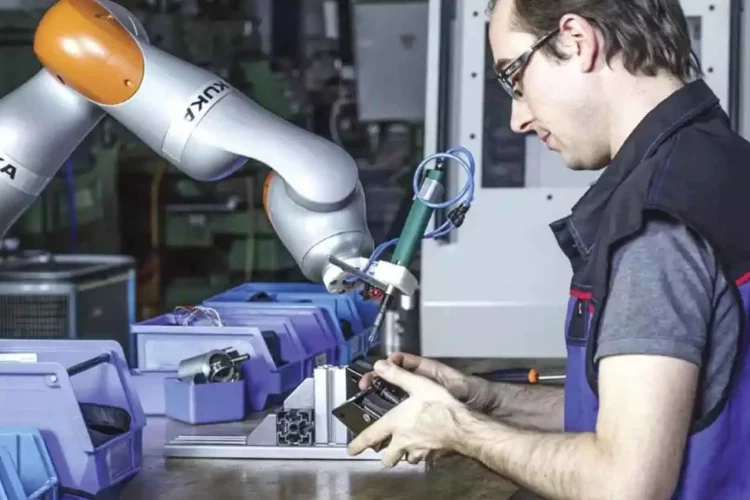Introduction
As industries around the world continue to embrace the fourth industrial revolution, robot automation has emerged as one of the most powerful tools for reducing operational costs. In an increasingly competitive global market, businesses are under constant pressure to optimize operations, improve efficiency, and minimize costs. By integrating robotic systems into their production processes, businesses can significantly reduce labor costs, improve throughput, and enhance product quality.
This article explores how robot automation is transforming industries, the specific areas where it is delivering the greatest cost savings, and the long-term impact on businesses striving for efficiency and profitability.
1. The Rise of Robot Automation
What is Robot Automation?
Robot automation refers to the use of robotic systems and technologies to perform tasks that were previously carried out by human workers. These robots are equipped with sensors, artificial intelligence (AI), machine learning, and advanced control systems, enabling them to execute a wide range of tasks, including assembly, packaging, material handling, and quality control.
While robot automation has been around for decades, recent advancements in AI and robotics have made it more accessible, versatile, and cost-effective for businesses of all sizes. As a result, industries ranging from manufacturing and logistics to healthcare and retail are increasingly adopting automation to drive efficiencies and reduce operational overheads.
Why Robot Automation is Key to Reducing Costs
The introduction of robotic automation offers several key advantages in terms of cost reduction:
- Lower Labor Costs: Robots can perform tasks 24/7 without the need for breaks, sleep, or vacations. This leads to a reduction in overall labor costs.
- Fewer Errors: Robots are programmed to perform tasks with precision, reducing the likelihood of errors that result in product defects and the associated costs.
- Increased Productivity: Robots can work faster and more efficiently than humans, increasing the overall throughput of a production line or service operation.
- Reduced Maintenance Costs: Robots require less frequent maintenance compared to human labor, which can result in a reduction in downtime and maintenance-related costs.
2. Key Areas of Application for Robot Automation
2.1 Manufacturing and Assembly
Manufacturing industries have long been at the forefront of robot automation adoption. In the past, industrial robots were primarily used in heavy-duty assembly lines, particularly in the automotive industry. Today, however, robots are being employed in a wide range of manufacturing sectors, including electronics, pharmaceuticals, and consumer goods.
- Assembly Line Automation: Robotic arms are commonly used for assembly tasks that involve precision, such as assembling small components, placing screws, or soldering parts. By automating these tasks, manufacturers can speed up production and reduce labor costs.
- Product Inspection and Quality Control: Robots equipped with vision systems can identify defects and ensure products meet quality standards. Automation in quality control not only reduces the likelihood of errors but also eliminates the need for costly human inspectors.
- Packaging and Sorting: Robots in packaging plants can handle tasks such as sorting, labeling, and packaging finished products. This automation reduces the reliance on manual labor for repetitive tasks and increases both speed and accuracy.
2.2 Logistics and Warehousing
Automation in logistics has become a game-changer for businesses involved in supply chain management and inventory control. By utilizing robotic systems, companies can streamline warehouse operations, reduce manual labor, and increase the speed at which products are shipped.
- Autonomous Mobile Robots (AMRs): These robots are capable of navigating warehouses and transporting goods from one location to another. With AI and machine learning, AMRs can efficiently plan routes, avoid obstacles, and optimize picking and packing processes.
- Robotic Sorting Systems: Automated sorting systems powered by robotics help reduce human labor and enhance the speed of sorting goods based on various parameters such as size, weight, and destination. This is particularly valuable in industries like e-commerce, where rapid order fulfillment is critical.
- Automated Storage and Retrieval Systems (AS/RS): These systems use robotic cranes and automated shelving units to store and retrieve products from a warehouse. This type of automation maximizes storage space and minimizes human errors in locating items.
2.3 Retail and Customer Service
Robots are increasingly being deployed in retail environments to handle a wide range of customer-facing tasks, such as inventory management, order fulfillment, and even customer service.
- Robotic Stock Management: Robots can autonomously scan shelves in retail stores to track inventory levels and restock products. This reduces the need for manual stock counts and ensures that products are always available for customers.
- Robotic Checkout Systems: In the retail sector, robots are being used in self-checkout kiosks and automated cashier systems, allowing customers to scan and pay for items quickly, reducing wait times and improving the overall shopping experience.
- Customer Interaction and Assistance: Some stores have adopted robotic assistants to greet customers, answer questions, and even help with product recommendations. These robots can offer personalized services based on customer preferences and browsing history, improving customer satisfaction while cutting down on the need for human employees.

3. Cost Reduction Through Automation in Other Sectors
3.1 Agriculture
In agriculture, robot automation is revolutionizing farming practices, particularly in areas like planting, irrigation, weeding, and harvesting. Agricultural robots can be programmed to work tirelessly in the fields, reducing the reliance on seasonal labor, which can be expensive and scarce. By optimizing planting and harvesting processes, farmers can boost productivity and reduce operational costs.
- Automated Harvesters: These robots are capable of picking crops like fruits, vegetables, and flowers with precision, reducing waste and improving crop yield.
- Weeding and Pest Control: Robots equipped with AI-powered vision systems can identify and remove weeds with minimal environmental impact, reducing the need for chemical pesticides and manual labor.
3.2 Healthcare
In healthcare, robot automation is improving both the efficiency and cost-effectiveness of medical procedures and patient care. Robots are being used for tasks such as surgery, rehabilitation, and inventory management in hospitals.
- Surgical Robots: Robots like Da Vinci Surgical Systems are transforming surgery by enabling doctors to perform minimally invasive procedures with greater precision, reducing patient recovery times and hospital stays.
- Robotic Exoskeletons: Used for rehabilitation and physical therapy, robotic exoskeletons assist patients in regaining mobility, offering a cost-effective alternative to long-term human physiotherapy.
- Medical Inventory Robots: Automated systems are used to manage medical supplies and pharmaceuticals in hospitals, reducing the risk of stockouts and improving the efficiency of inventory replenishment.
4. Challenges and Considerations in Robot Automation
While robot automation offers significant cost reduction opportunities, businesses must consider several factors when integrating robots into their operations:
- Initial Investment: The upfront costs of purchasing and installing robots can be substantial. However, businesses should view this as a long-term investment, as automation leads to cost savings over time through reduced labor and operational efficiencies.
- Integration with Existing Systems: Robots must be integrated with existing IT systems, such as Enterprise Resource Planning (ERP) software, to ensure smooth operations across all stages of production, logistics, and customer service.
- Workforce Impact: Automation may lead to job displacement in certain sectors. It is essential for companies to offer retraining and reskilling programs for workers whose jobs are affected by automation, helping them transition to new roles within the company or industry.
- Maintenance and Upkeep: While robots require less frequent maintenance than human workers, they still require ongoing upkeep to ensure that they perform efficiently. Regular checks and software updates are necessary to avoid costly downtime.
5. Conclusion: The Future of Robot Automation in Reducing Operational Costs
In conclusion, robot automation has become a transformative force across industries, offering significant potential for reducing operational costs and improving business efficiency. From manufacturing and logistics to retail and healthcare, robots are streamlining operations, increasing productivity, and enhancing the customer experience. As technology continues to evolve, robots will become even more capable and cost-effective, making them an essential tool for businesses aiming to stay competitive in an ever-changing global marketplace.
For businesses willing to embrace this technological shift, the long-term benefits of robot automation far outweigh the initial investment. Cost reduction, increased productivity, and improved quality are just the beginning of what automation can offer in the future.







































